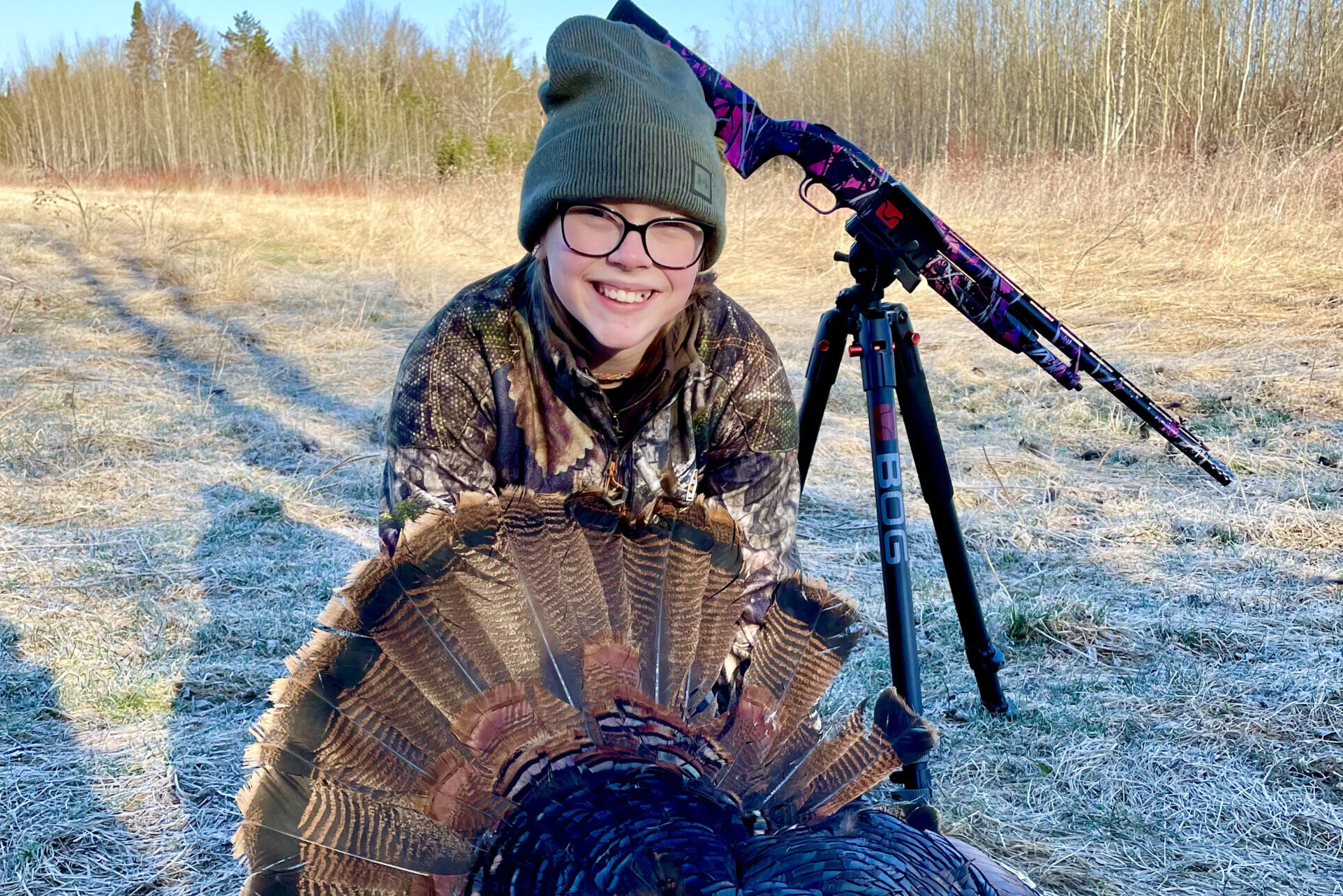
Having traveled to southern Maine, New Hampshire, Florida and even Hawaii to hunt various species of wild turkey, I was elated when a number of them were transplanted in Aroostook County between 2007 and 2011. Honestly, however, I was skeptical that turkey could survive our frigid, snowy, northern Maine winters and find enough food, let alone propagate and expand their territory.
Fast forward a dozen years and Crown of Maine hunters now enjoy both spring and fall seasons, with growing flocks in Aroostook’s fields and forest. Central and southern Maine offer a far higher concentration of birds, excellent breeding, nesting and feeding habitat and more hunter-friendly open fields and pastures to pursue these wary wildfowl.
Interest in the challenging endeavor of bagging a big tom turkey coxes more sportsmen and women afield each year and it’s become a big draw for youth hunters as well. That most hunting families already own a suitable shotgun and camo gear, especially those who hunt waterfowl, lowers the initial investment to get started. A dependable scattergun with a full choke, compatible shells, full camouflage clothing, especially a face mask and gloves, and at least one decoy compile most of the basic equipment for rookie gobbler gunners.

There is one other essential piece of gear necessary, and its selection and proper use can make or break every turkey hunt: you need some sort of call to realistically “talk turkey.” There are several types of turkey calls in a wide range of prices; each with a specific sound, method and ease of producing a realistic hen or tom call. Here are options from simplest to more difficult to operate.
Shaker and push-button boxes are two options in the $20 range that can be operated with one hand and yield a realistic gobble or hen cluck. For the best shooting outcome and higher success ratio, a two-person team is the way to go. One person does all the calling while the shooter can remain motionless with the gun steady on a tripod rest so as not to spook the bird as it approaches. For a one-hunter outing, however, especially with an inexperienced caller, a one-handed automatic shake or push-button call is excellent.
Either a slide-top box call or a disc and striker combo is the next level, and they each require two hands to operate but produce a far wider range of call. Tone, softness or loudness can be easily controlled by the user and each requires practice. Box calls operate by simply sliding the top across the mouth of the box in small increments with varying amounts of pressure.
For the second style, the caller holds the disc in one hand and the striker in the other like a pencil. The pan (center of the disc) is comprised of slate, glass, crystal or aluminum, and by rubbing the tip of the striker against the disc, imitation turkey sounds are produced. The center yields deeper sounds while the edges offer high-pitched, louder tones. These are good for beginners to experienced callers and every one produces a varied sound for each individual. Either style averages $25 to $50 apiece.

The last manually operated call, most favored by seasoned turkey hunters, is the mouth call, also referred to as a diaphragm call. Arguably the most difficult to master, the half-moon device fits into the roof of the mouth, offering hands-free use and a wide selection of coaxing calls mimicking toms and hens. While a couple effective, basic calls may be achieved after a few practice sessions, a full repertoire of realistic turkey sounds takes much longer.
Most novice hunters don’t know the many sounds a wild turkey uses. Some of the calls needed to fool a real bird include a cluck, purr, cut, yelp, kee kee, gobble, putt and cackle, performed single or in combinations. Hunters also need to imitate by mouth or with a breath-blown call the sound of an owl or crow while scouting. This will elicit a shock response from roosting turkey and help hunters locate their overnight rest site, so they know where to set up the next morning.
I’d be remiss not to mention a final call option that is growing popular and is extremely effective, especially among novice turkey hunters. Electronic game calls are considered by many sportsmen to be the most useful recent advancement in hunting equipment. Experienced turkey hunters often prefer the hands-on involvement of using a manual call, but neophytes will fare much better with battery-operated units.
Depending on features, electronic turkey calls range from $50 to over $400, and many allow the remote speaker to be placed under or hidden in grass right beside the decoy.

There is one final alternative: coax a friend with lots of experience to come along on your hunt and do the calling. You could hire a professional guide who will supply gear, expertise and do the scouting. Watch, listen and learn to gain experience and knowledge for your first solo venture.
With turkey calls, very often less is far more productive than more. Turkeys have exceptional hearing and will pinpoint your position within yards when they hear your first call. Don’t overdo. Space out calling and change sounds for the best results and let the decoys do most of the enticement.







